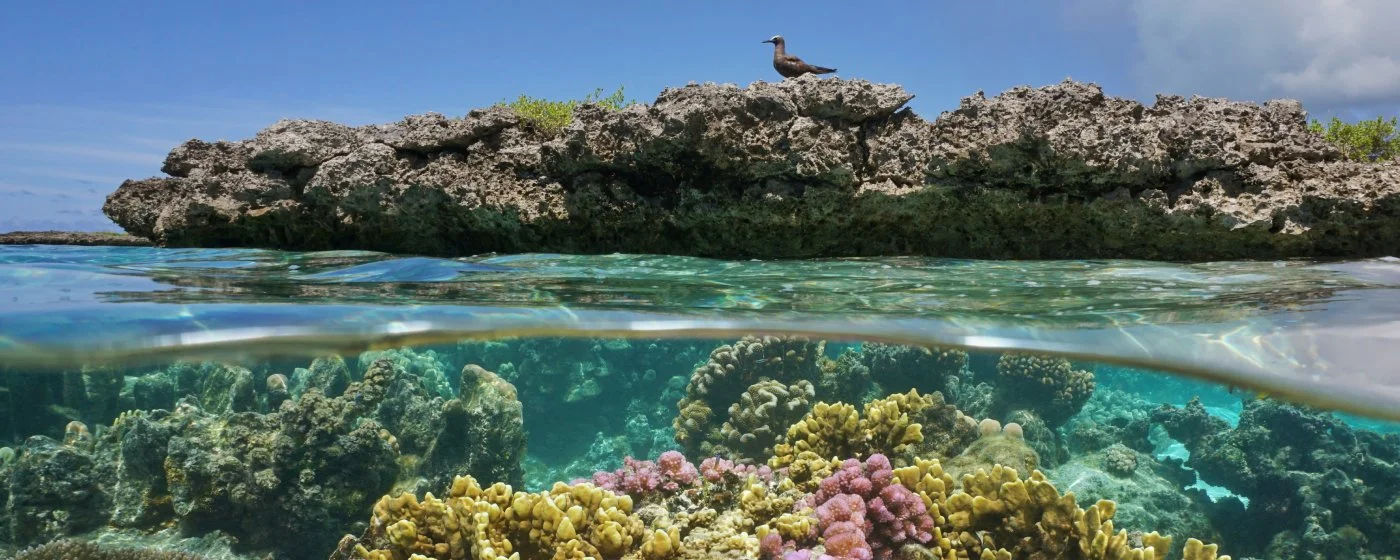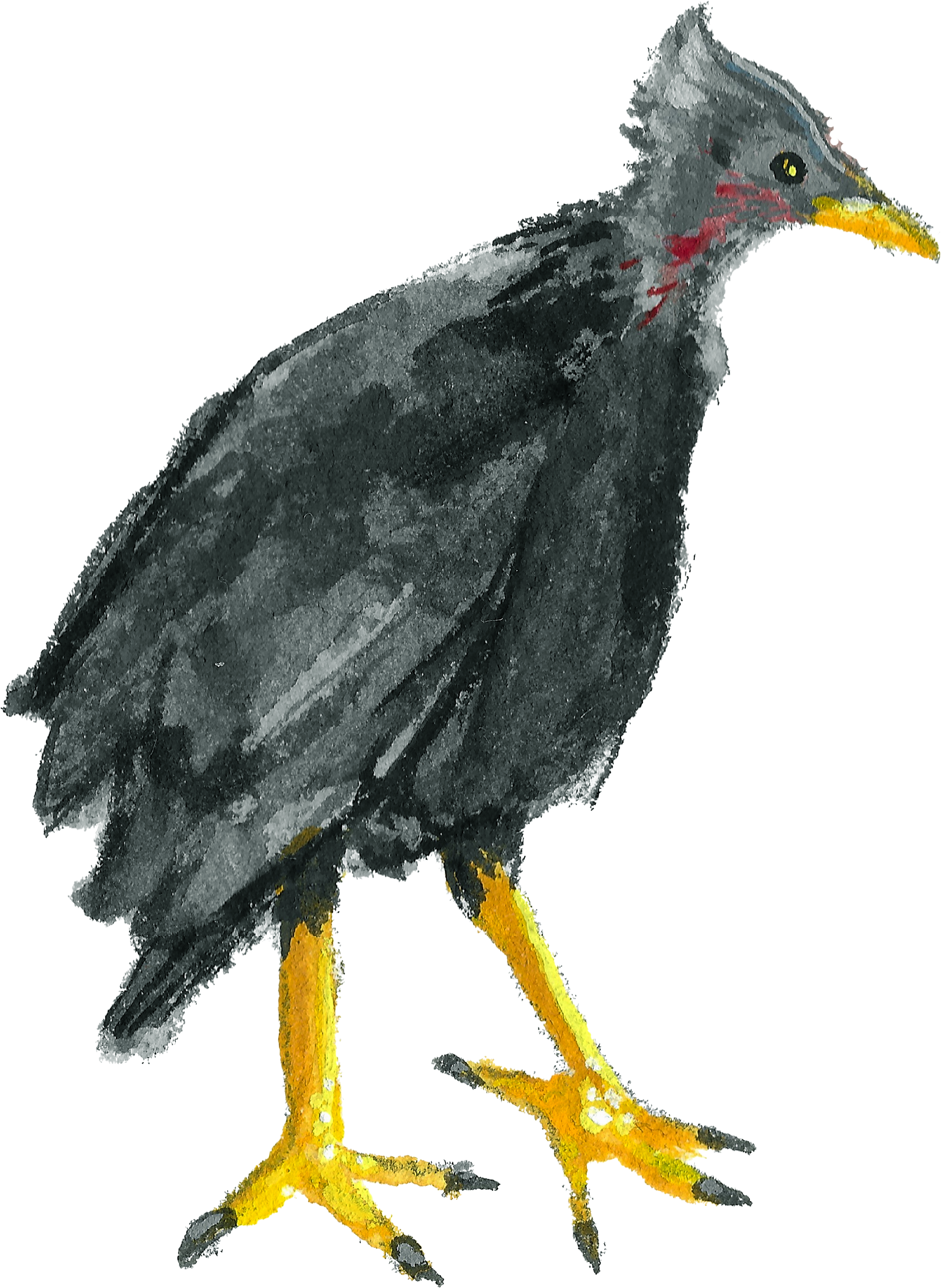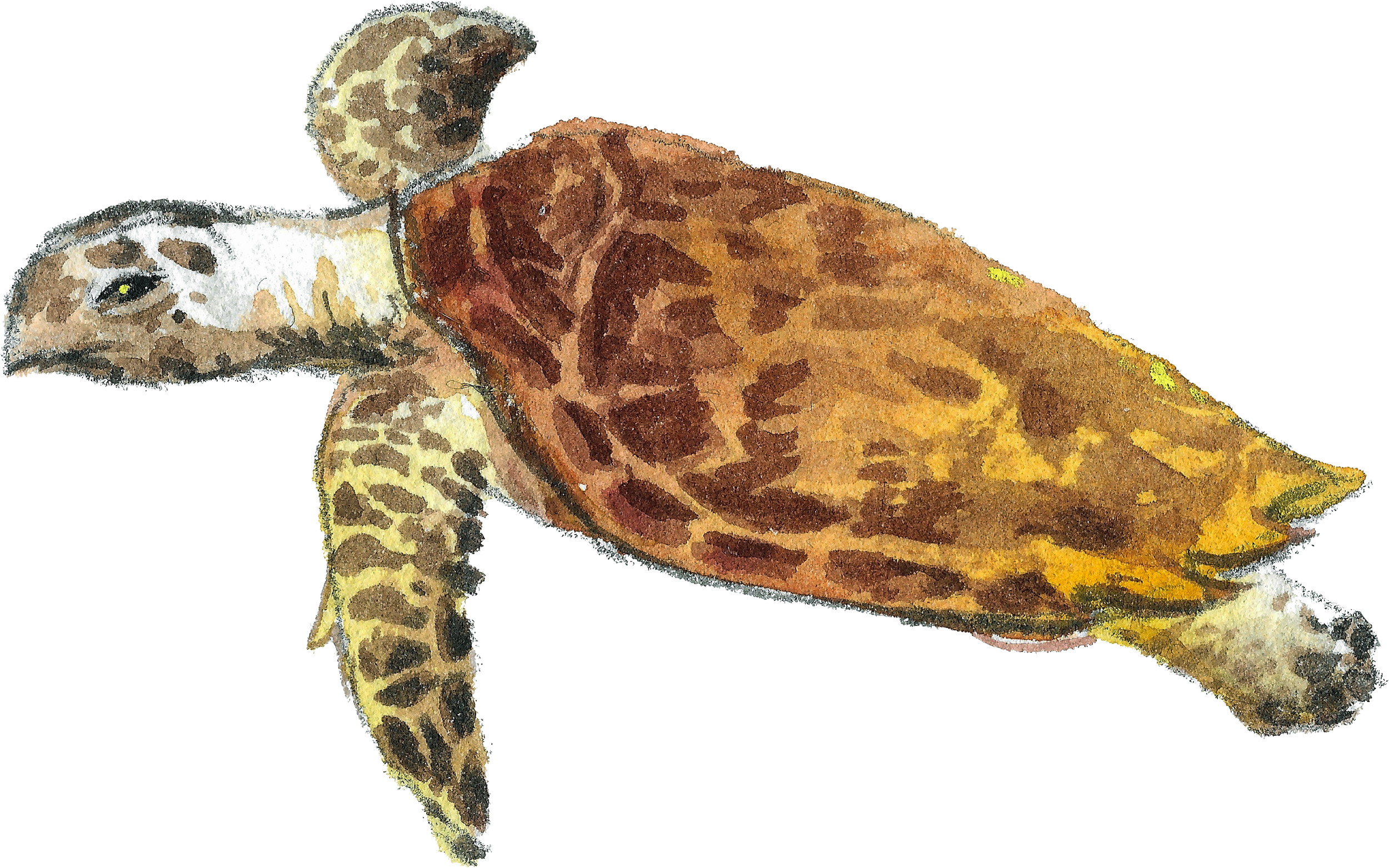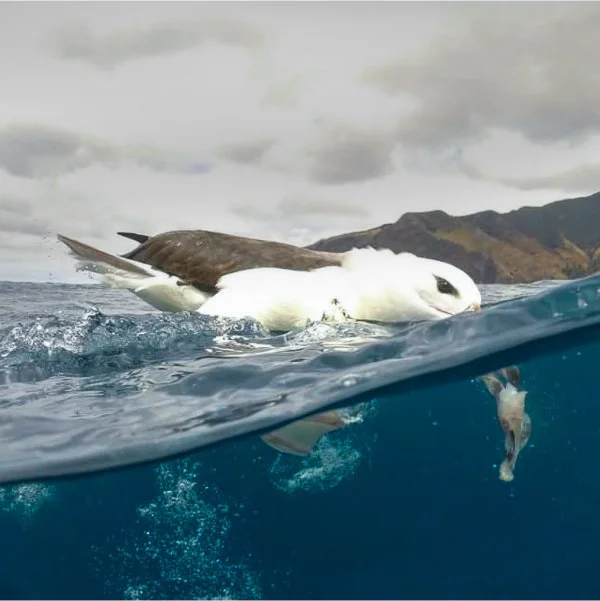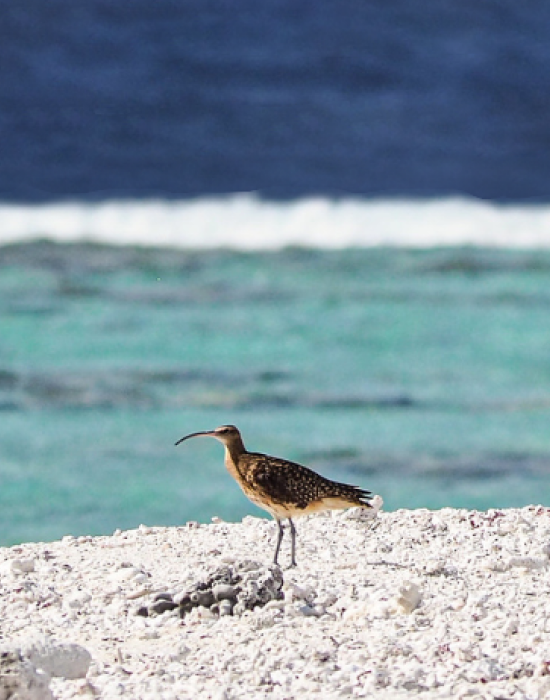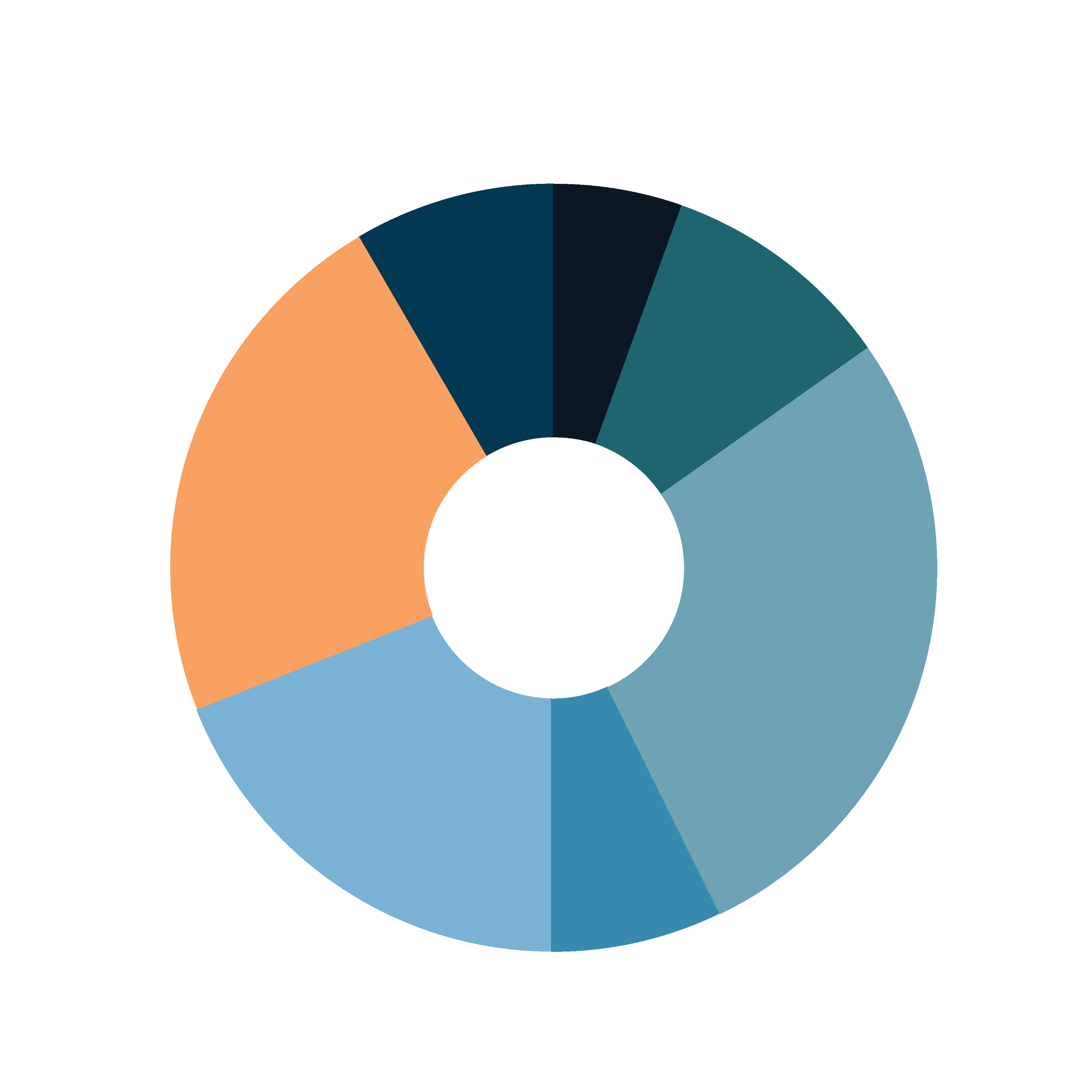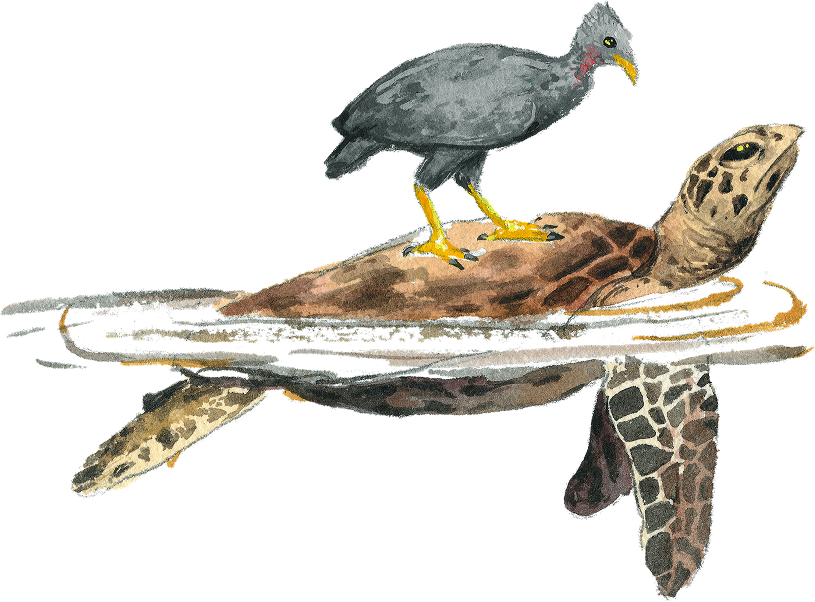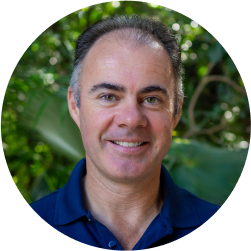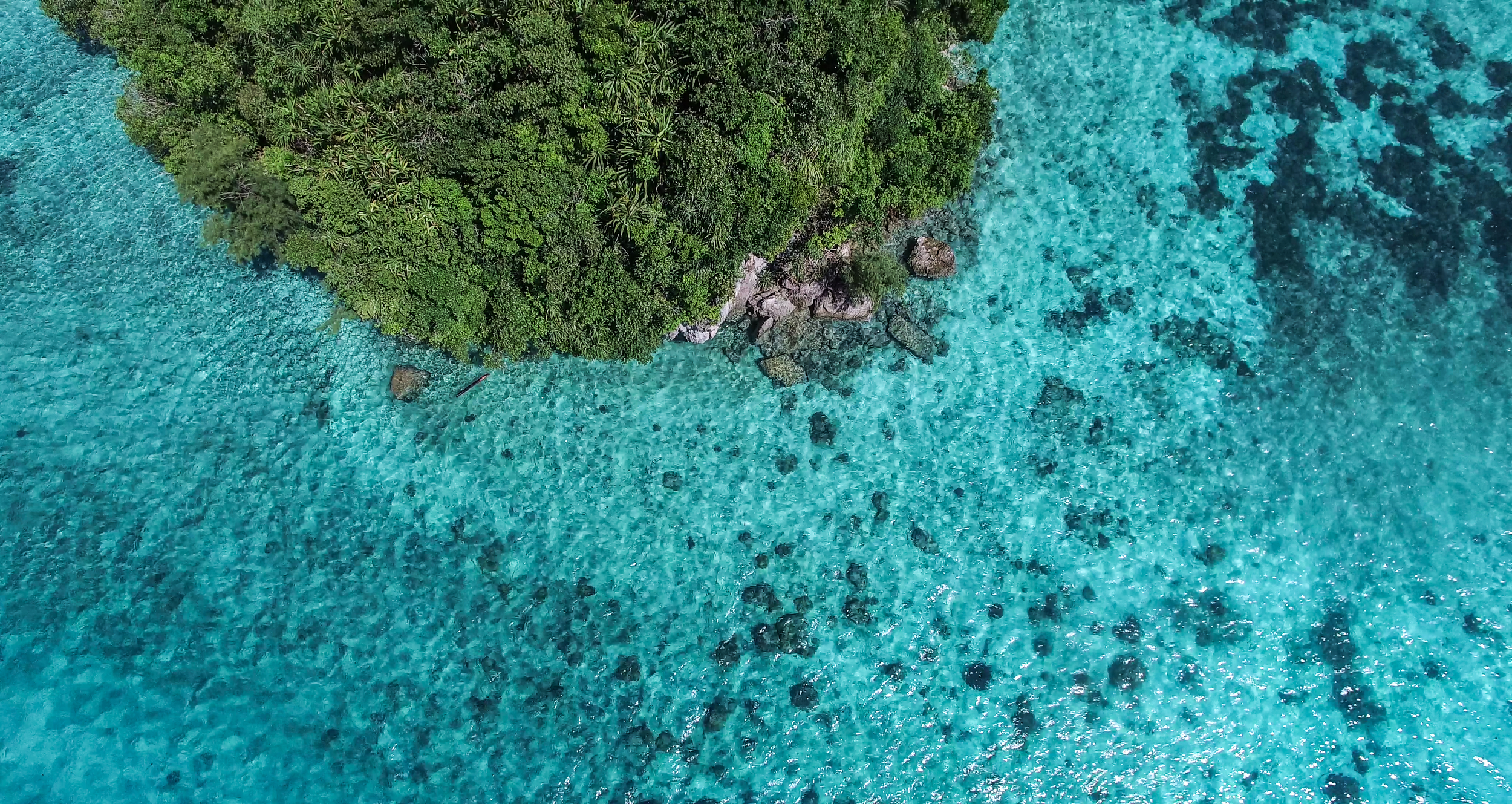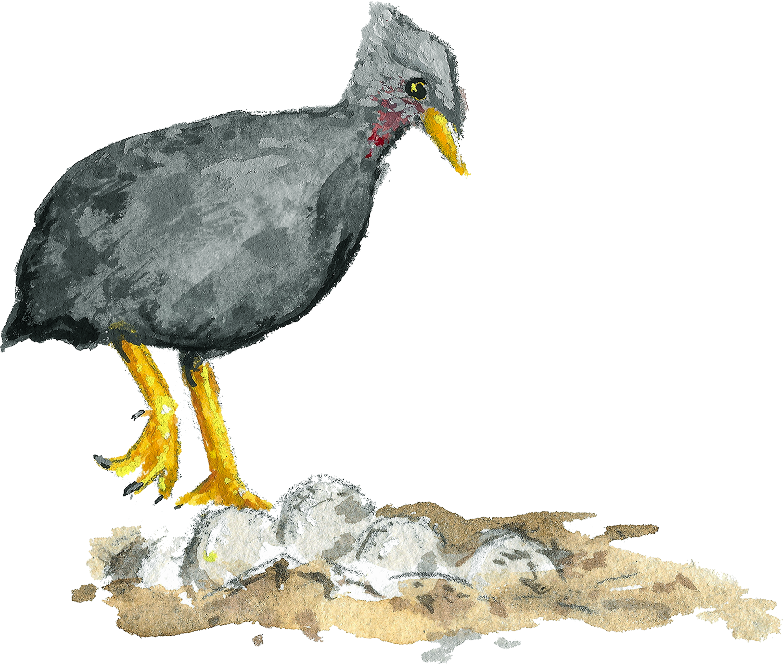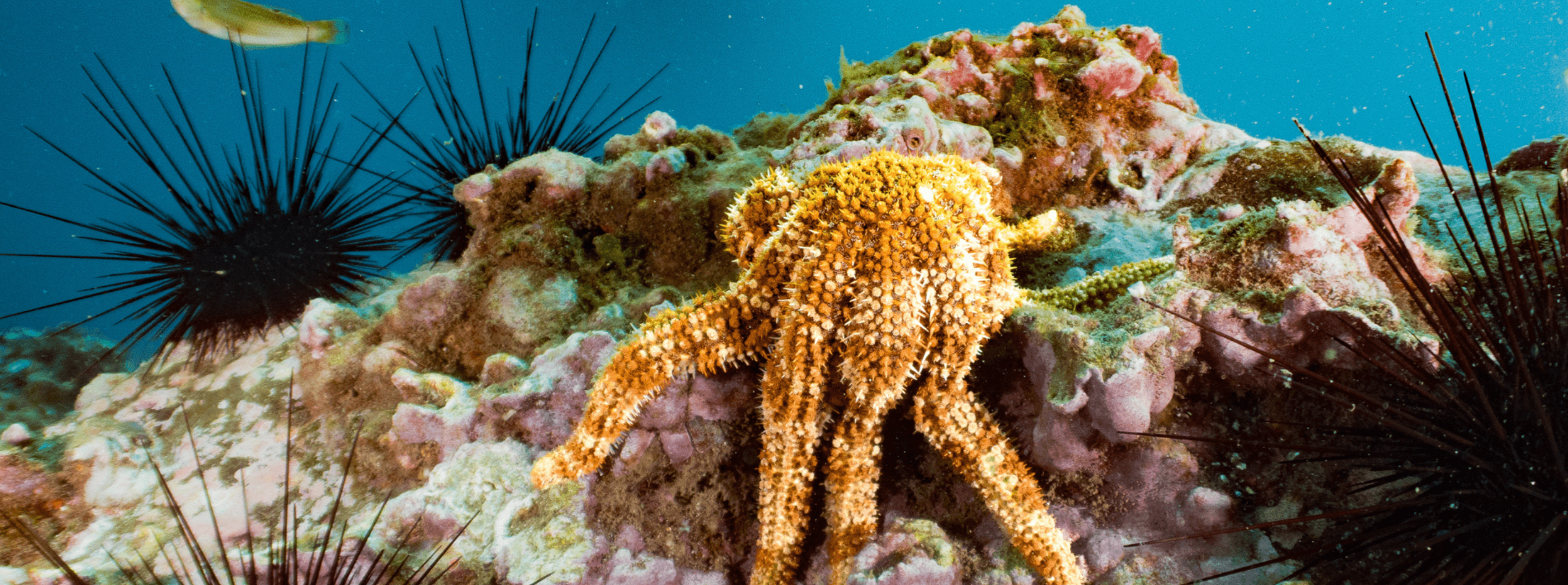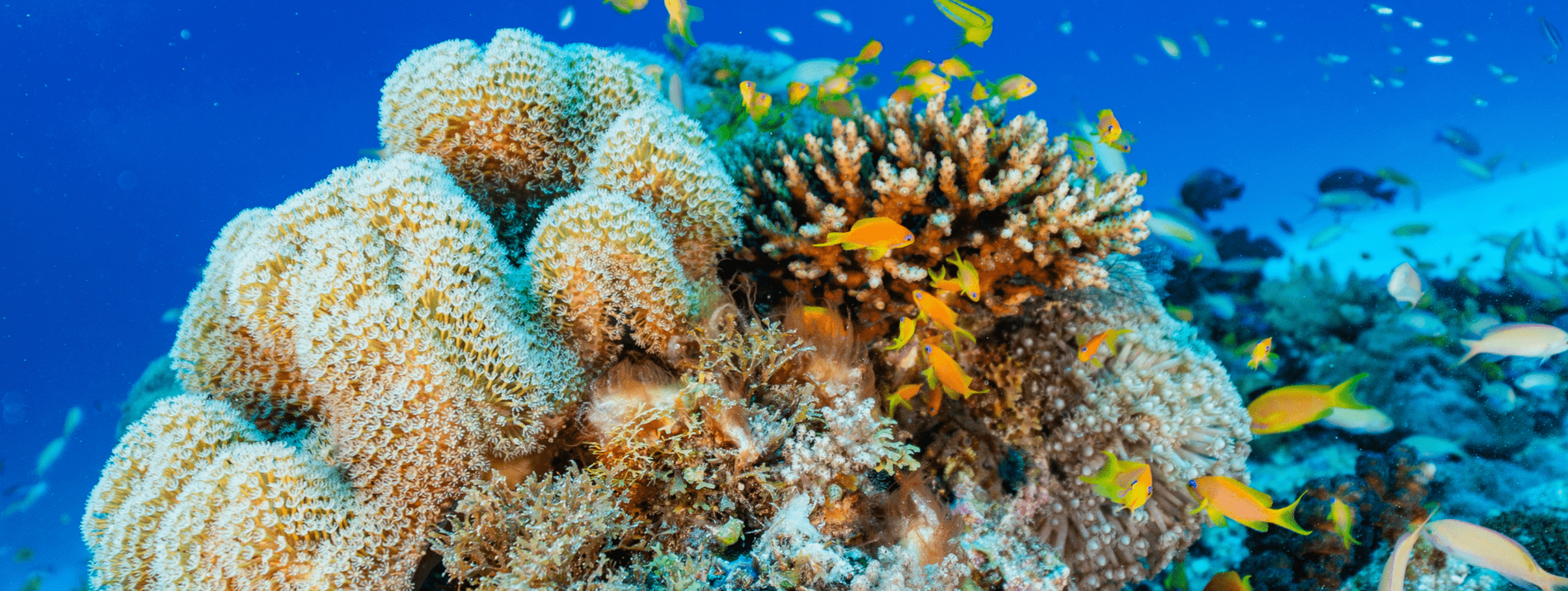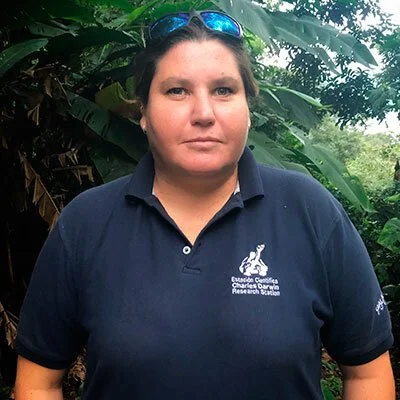Island-Ocean Connection Challenge 2025 Impact Report
The Turtle and The Megapode
An ancient story from Ngerkeklau, Palau.
As told by Ann Singeo, Executive Director of IOCC partner The Ebiil Society.
Illustrated by Bren Ram.
Once in the village of Ngetmel in Ngarchelong, a woman gave birth to a megapode bird and a turtle. Every day when she returned from tending her taro patch, her children had dug the soil and made a mess of her yard.
The turtle said to the megapode, “Maybe we should find a new home.”
The megapode said, “You have the ability to swim away, but what will I do?”
“You will hop on my back, and I will swim as we travel.”
Ambitious Goals. Outsized Benefits for Islands, Oceans, and People.
OUR COMMITMENT
40
Globally-significant island-ocean ecosystems
OUR TIMELINE
2030
To begin holistic restoration for all 40
island-ocean ecosystems
22
OUR PROGRESS
Island-ocean ecosystems pledged to
the campaign to date — and counting!
The goal of the Island-Ocean Connection Challenge is ambitious: to holistically restore 40 globally-significant island-ocean ecosystems from ridge to reef by 2030. But the IOCC has come to embody more than that one goal. As an international response to the convergence of traditional wisdom and emerging science, the IOCC represents a commitment to the ecological fact that everything is connected—and that healthy oceans and healthy islands are two sides of the same coin.
By connecting leaders in the environmental sphere, including governments, NGOs, scientific institutions, and local communities, the IOCC captures the full picture of what we stand to gain when we prioritize the holistic restoration of key ecosystems. Addressing the compounding crises of climate change, ocean degradation, invasive species, and biodiversity loss, IOCC projects are healing ecosystems around the world while building climate resilience and food security for island communities.
With 22 projects across the globe, the IOCC is reconnecting the vital nutrient flows that interlink land and sea. As populations of seabirds rebound on islands, their nitrogen-rich guano enriches soil, helping native plants grow. These plants not only capture atmospheric carbon, but they also help prevent erosion via strong root systems, building climate resilience. And when nutrients from healthy terrestrial ecosystems wash into the near-shore environment, fish and coral get a big boost. Corals can grow four times faster, and fish biomass can increase by up to 52%!
These multiple benefits, along with the partnership structure that shapes our work, makes the IOCC unique in the world. The outsized impact of holistic restoration echoes the outsized influence that island-ocean ecosystems exert on our planet. Galvanizing action by funders, NGOs, and governments, the IOCC is already seeing positive outcomes. We’re proud to share the results of our work transforming not only island ecologies but also the way we humans work to protect them!
CORALS CAN GROW
4X
FASTER
FISH BIOMASS INCREASES BY
52%
Big Wins & Strong Starts
Hope for the Future
Island-Ocean Connection Challenge
By the Numbers
IOCC Partner Types
Communication Strategist — 3
Community Champion — 5
Funder — 17
Fundraising Partner — 4
Government Advocate — 11
Project Implementer — 13
Researcher — 1
61
TOTAL PARTNERS
80%
IOCC islands are within
or adjacent to MPAs
And so it was
The turtle and the megapode traveled down south until they came to the front of Aimeliik, where the megapode said to the turtle, “I will get off here.” She said to the turtle,
“You continue your journey. But someday when you have children, make sure to bring them to where I am, so I can help take care of them.”
Financials: Progress has been Made, More Support is Needed
TOTAL IN PLEDGED COMMITMENTS
to island-ocean restoration work through the IOCC portfolio
$250M +
TOTAL RAISED TO DATE
for restoring and rewilding IOCC island-ocean ecosystems
$100M +
A Decade of Island Resilience
“As we look to the future, let us take this opportunity to raise global ambition for islands and ecosystems, to amplify the voice of island populations, to develop and showcase solutions, and, above all, to demonstrate outcomes.”
— Cameron Driver, VP of Conservation, Island Conservation
Islands are biodiversity hotspots and hope spots for the planet.
Islands and their populations are fabulous laboratories for scalable solutions, innovative approaches and measurable outcomes that demonstrate the multisectoral benefits that holistic restoration efforts, integrating science-based biodiversity action, ocean action and climate action alongside genuine community engagement and quality partnerships, can bring. Island restoration can help meet national, regional and international biodiversity, ocean, climate and sustainability targets.
As we look to the future, let us take this opportunity to raise global ambition for islands and ecosystems, to amplifying the voice of island populations, to develop and showcase solutions and, above all, to demonstrate outcomes.
Join Island Conservation in the call for a UN sanctioned Decade of Island Resilience with the theme “Islands for impact” and help create both a new convening framework and a platform for ambitious partnerships and concrete action to truly harness the potential of holistic island restoration for nature, oceans and people worldwide.
“Islands and oceans are connected–something many people living along coasts have long understood, depended on and managed holistically as a result.”
— Dr. Penny Becker, CEO, Island Conservation
Today, the megapode and the Hawksbill turtle nest in the same area, both incubating their eggs in the sand.
From the Ebiil Society’s work on Ngerkeklau Island, we observe the megapode digging the sand open, to allow the baby turtles to crawl out and down to the sea.
Science and Research
An op-ed by IOCC founders Dr. Penny Becker, CEO, Island Conservation; Dr. Stuart Sandin, Biological Oceanography Professor, Center for Marine Biodiversity and Conservation, Scripps Institution of Oceanography and Wes Sechrest, CEO, Re:wild.
Islands are Solutions: the Case for Island-Ocean Coalitions
New Paper Connects Island Restoration, Seabird Populations, and Coral Reef Health
Research published in Conservation Biology demonstrates how connector species such as seabirds are key to reviving island and marine ecosystems, and underscores the multiple benefits of island restoration.
Restoring Seabird Populations and Coral Reef Resilience
A recent study published in Science sheds light on a natural ally in the fight for reef resilience: seabirds. The connection between seabird-derived nutrient subsidies, invasive species, and coral recovery holds valuable lessons for targeted conservation efforts.
Voices From The Community
“The Island-Ocean Connection Challenge offers my research in the Galápagos a vital platform to generate and share scientific knowledge that supports healthy oceans, resilient ecosystems, and sustainable island communities. By connecting global efforts, we can ensure that conservation actions in places like the Galápagos contribute to broader solutions that benefit both nature and people around the world.”
— Inti Keith, PI of the Marine Biodiversity Program & Marine Ecosystems Project Coordinator Charles Darwin Research Station
Project Partners & Funders
• American Bird Conservancy
• BirdLife International
• BirdLife South Africa
• Blue Nature Alliance
• Chatham Island Landscape Restoration Trust
• Charles Darwin Foundation
• Conservation X Labs
• Cookson Adventures
• Danny Faure Foundation
• David and Lucile Packard Foundation
• Ebiil Society (Palau)
• Fauna & Flora International
• Friends of Virgin Islands National Park
• Fundacion Jocotoco
• Fundemar
• Galapagos Conservation Trust (GCT)
• Global Island Partnership (GLISPA)
• Government of Chile
• Government of the Dominican Republic
• Government of Ecuador
• Government of Palau
• Government of Panama
• Great Barrier Reef Foundation
• Island Conservation
• Juan Fernández Sea Council
• Journeys With Purpose
• The Katherine and Peter Dolan Family Foundation
• Kingdom of Tonga
• Leo Model Foundation
• LGA Foundation
• Marisla Foundation
• Marshall Islands Conservation Society
• Marshall Islands Marine Resources Authority
• Mission Blue
• The Mouse-Free Marion Project
• New Zealand Department of Conservation
• New Zealand Nature Fund
• NEXT Foundation
• North Equity Foundation
• Ocean Finance Company
• Oceankind
• OneReef
• Paul M. Angell Family Foundation
• Rare
• Republic of Kiribati - Ministry of Environment, Lands and Agricultural Development
• Republic of Marshall Islands (RMI)
• Republic of Peru
• Réserve Naturelle Nationale de Saint-Martin
• Re:wild
• Royal Society for the Protection of Birds
• Salesforce
• Secretariat of the Pacific Regional Environment Programme (SPREP)
• Sheth Sangreal Foundation
• Sociedad Ornitológica de la Hispaniola (SOH)
• UC San Diego Scripps Institution of Oceanography
• Société d’Ornithologie de Polynésie (Manu)
• Sonsorol State, Palau
• Te Puka Rakiura Trust Predator Free Rakiura
• Tetiaroa Society
• Wanderlust Fund

